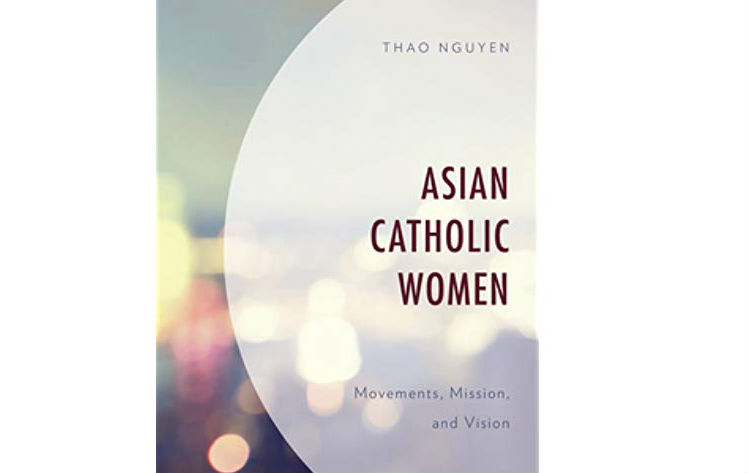
Shining a Light on the Good Work of Asian Catholic Women
A new book by Jesuit priest and Santa Clara University religious studies professor Thao Nguyen, S.J., sheds light on a little-explored but important realm of Catholicism: the evolving and impactful role of women in the Catholic Church in Asia.
Asian Catholic Women: Movements, Mission and Vision, published in December by Lexington Books, celebrates the stories and voices of women leaders such as India’s Astrid Ana Lobo Gajiwala, whose struggles with the church hierarchy ultimately helped convince Catholic bishops there to issue one of the most important documents on women, Gender Policy of the Church in India, in 2010.
Also mentioned is Mary John Mananzan, the influential and highly activist Filipina Benedictine sister, who used her theological education to dismantle supposed biblical justifications for women’s oppression and has openly fought against Asian stereotypes that serve to keep women in submissive roles.
Other female pioneers populate Nguyen’s book, in which he identifies three distinct “movements” of the past four decades that have advanced progress for women in Asia. For instance, in the 1970s, women religious from multiple nations gathered as the Asia/Oceania Meeting of Religious Women, specifically to increase the role of women religious in social justice causes. In 1995, a group of women and bishops was launched with a stated goal to meet every four years to discuss women’s concerns in the church—resulting in surprisingly progressive writings in support of women’s advancement in the region. Since then, voices of women have been incorporated in the most important documents of the Federation of Asian Bishops’ Conference (FABC).
And in 2008, lay and religious women leaders formed the Theological Forum Ecclesia of Women in Asia, a highly influential group which the author calls “one of the most powerful Catholic women movements of its time.”
Nguyen also delves into ways in which influential Asian women’s views of the Church’s mission differ from their male counterparts’, and how their vision for the future of the Church includes support for ideas including liberation theology (a religious movement started in Latin America by Catholic priests that emphasizes the needs of the poor and oppressed); healing the wounds of people of God; and Asian Family Theology, which re-examines the Bible from Asian families’ perspective.
The SCU Jesuit and professor also explores the ordination of women deacons, which would allow women to preach at Mass and perform the sacrament of baptism. Nguyen found that as far back as 1976, there had been support for such ordination among Indian theologians.
The aim of the book is “to investigate how Asian Catholic women in the last four decades have asserted themselves and sought ways to become prophetic in the midst of struggle and suppression,” according to the book’s introduction. It also argues that “it is time for the church hierarchy in Asia to take seriously women’s potential, leadership, charisma, and vision.”
Nguyen, a priest who joined the Jesuit Order in the 1990s, grew up in Vietnam. There he witnessed firsthand the good that women were doing in the Catholic church throughout Asia. Women served the homeless and the poor, orphans, the sick and disabled, lepers, HIV patients, and those dying on the streets. They ran Catholic schools, hospitals, and medical clinics. These women also have been deeply engaged in social justice work, including combating the scourge of human trafficking; experts say two-thirds of the estimated 40 million trafficked victims are in East Asia and the Pacific.
But when as a theologian he searched for information about women in theological leadership roles, Nguyen said he couldn’t find much about the subject.
“I started questioning—where are all the books about women?” he said. Finding few, he decided to write one himself. Nguyen hopes his effort will spur others —including Asian women theologians themselves—to continue to build a scholarly record that honors women’s contributions to theology and ecclesiology in Asia.
Denise Carmody, former Santa Clara University provost and religious studies professor, would agree. As she noted: “This book is a treasure trove of material for discussions in classrooms, faith-sharing groups, and interfaith study.”